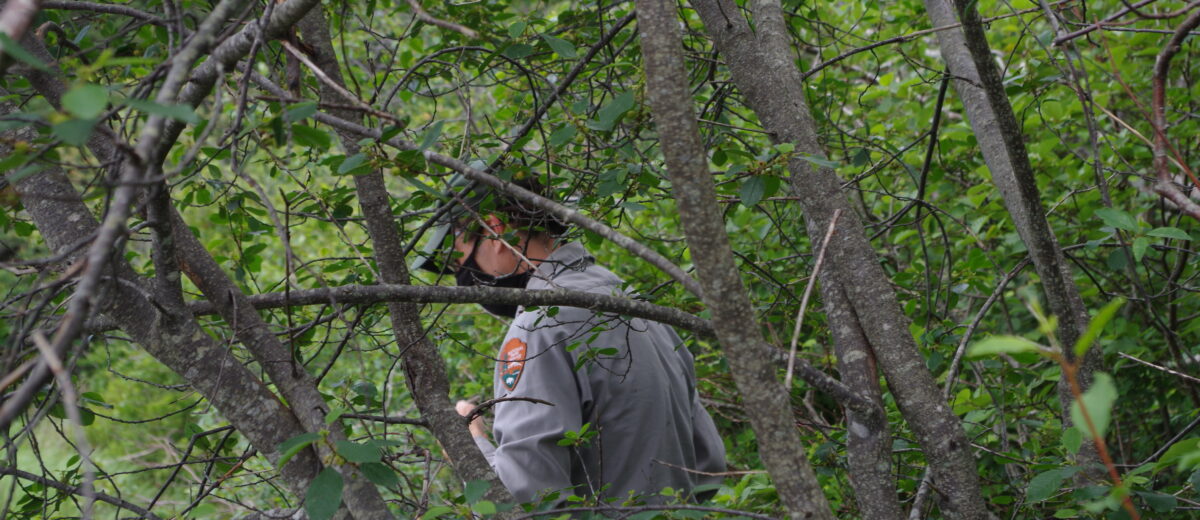Invasive plants are a problem in national parks across the country.
In a recent presentation to their National Park Service colleagues, Kate Miller and Stephanie Perles of the National Park Service Inventory & Monitoring Program Eastern Forests Working Group provide invasive plant trends in 39 eastern national parks from Maine to Virginia.
In their analysis of data collected from more than 1,400 permanent forest monitoring plots spanning 12 years, published in the journal Ecological Applications in 2020, they found nearly all the parks had at least one invasive plant that was significantly increasing in abundance. Troublesome plants include groundcovers like stiltgrass (Microstegium vimineum) and shrubs, especially barberry (Berberis thunbergii), honeysuckle (Lonicera japonica), and multiflora rose (Rosa multiflora). These plants dominate the understory, preventing the growth of native wildflowers and tree seedlings.
“The high and often increasing abundance of invasives in these parks poses significant threats to the long-term condition of the forests in these same parks, and is in conflict with the mission of the National Park Service,” reported Perles, Miller, and their study co-authors.
Managing invasive plant species can seem an endless, insurmountable task, given limited funding and staff capacity. But all hope is not lost. Tools are available for land managers to create a prioritized, strategic plan to protect the most valued places in a park.
More information on invasive plants in national parks:




